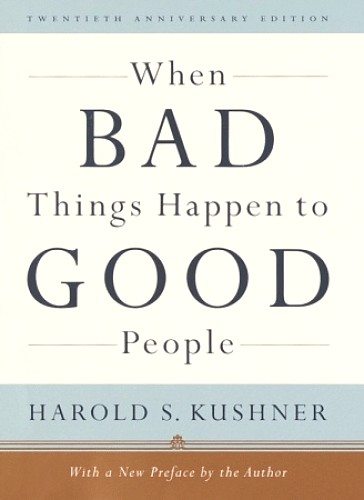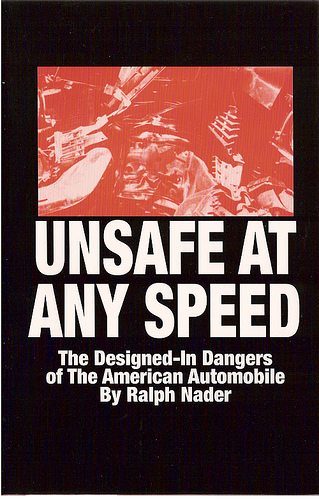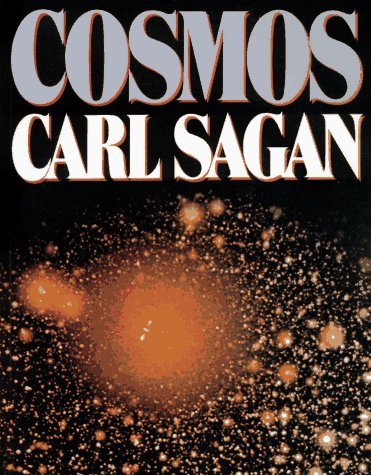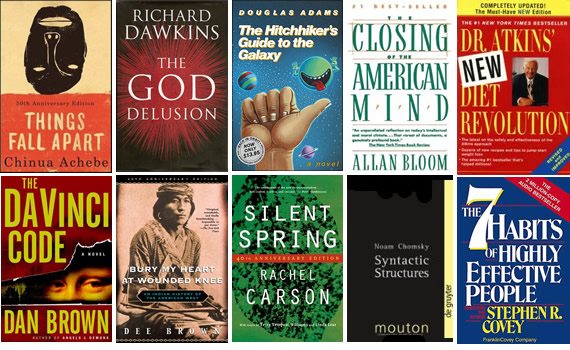In compiling the books on this list, the editors at SuperScholar have tried to provide a window into the culture of the last 50 years. Ideally, if you read every book on this list, you will know how we got to where we are today. Not all the books on this list are “great.” The criterion for inclusion was not greatness but INFLUENCE. All the books on this list have been enormously influential.
The books we chose required some hard choices. Because influence tends to be measured in years rather than months, it’s much easier to put older books (published in the 60s and 70s) on such a list than more recent books (published in the last decade). Older books have had more time to prove themselves. Selecting the more recent books required more guesswork, betting on which would prove influential in the long run.
We also tried to keep a balance between books that everyone buys and hardly anyone reads versus books that, though not widely bought and read, are deeply transformative. The Grateful Dead and Frank Zappa never sold as many records as some of the “one-hit wonders,” but their music has transformed the industry. Influence and popularity sometimes don’t go together. We’ve tried to reflect this in our list.
1. Chinua Achebe’s Things Fall Apart (1958), as the most widely read book in contemporary African literature, focuses on the clash of colonialism, Christianity, and native African culture.
[Amazon Link] – [Wikipedia Link]
[Amazon Link] – [Wikipedia Link]
2. Douglas Adams’ The Hitchhiker’s Guide to the Galaxy (1979) reinvented the science fiction genre, making it at once sociologically incisive as well as funny.
[Amazon Link] – [Wikipedia Link]
[Amazon Link] – [Wikipedia Link]
3. Robert Atkins’ Dr Atkins’s New Diet Revolution (1992, last edition 2002) launched the low-carbohydrate diet revolution, variants of which continue to be seen in numerous other diet programs.
[Amazon Link] – [Wikipedia Link]
[Amazon Link] – [Wikipedia Link]
4. Richard Dawkins’s The God Delusion (2006), drawing on his background as an evolutionary theorist to elevate science at the expense of religion, propelled the neo-atheist movement.
[Amazon Link] – [Wikipedia Link]
[Amazon Link] – [Wikipedia Link]
5. Allan Bloom’s The Closing of the American Mind (1987) set the tone for the questioning of political correctness and the reassertion of a “canon” of Western civilization.
[Amazon Link] – [Wikipedia Link]
[Amazon Link] – [Wikipedia Link]
6. Dan Brown’s The Da Vinci Code (2003), an entertaining thriller, has been enormously influential in getting people to think that Jesus is not who Christians say he is and that Christianity is all a conspiracy.
[Amazon Link] – [Wikipedia Link]
[Amazon Link] – [Wikipedia Link]

7. Dee Brown’s Bury My Heart at Wounded Knee (1970) transformed the way we view native Americans as they lost their land, lives, and dignity to expanding white social and military pressures.
[Amazon Link] – [Wikipedia Link]
[Amazon Link] – [Wikipedia Link]
8. Rachel Carson’s Silent Spring (1962) more than any other book helped launch the environmental movement.
[Amazon Link] – [Wikipedia Link]
[Amazon Link] – [Wikipedia Link]
9. Noam Chomsky’s Syntactic Structures (1957), laying out his ideas of transformational grammar, revolutionized the field of linguistics and at the same time dethroned behaviorism in psychology.
[Amazon Link] – [Wikipedia Link]
[Amazon Link] – [Wikipedia Link]
10. Stephen Covey’s Seven Habits of Highly Successful People (1989) set the standard for books on leadership and effectiveness in business.
[Amazon Link] – [Wikipedia Link]
[Amazon Link] – [Wikipedia Link]
11. Michael Behe’s Darwin’s Black Box (1996), though roundly rejected by the scientific community, epitomizes the challenge of so-called intelligent design to evolutionary theory and has spawned an enormous literature, both pro and con.
[Amazon Link] – [Wikipedia Link]
[Amazon Link] – [Wikipedia Link]

12. Jared Diamond’s Guns, Germs, and Steel (1997), in employing evolutionary determinism as a lens for understanding human history, reignited grand history making in the spirit Spengler and Toynbee.
[Amazon Link] – [Wikipedia Link]
[Amazon Link] – [Wikipedia Link]
13. Umberto Eco’s The Name of the Rose (1980) examines, in the context of a mystery at a medieval monastery, the key themes of premodernity, modernity and postmodernity.
[Amazon Link] – [Wikipedia Link]
[Amazon Link] – [Wikipedia Link]
14. Victor Frankl’s Man’s Search for Meaning (1962) provides a particularly effective answer to totalitarian attempts to crush the human spirit, showing how humanity can overcome horror and futility through finding meaning and purpose.
[Amazon Link] – [Wikipedia Link]
[Amazon Link] – [Wikipedia Link]
15. Betty Friedan’s The Feminine Mystique (1963), in giving expression to the discontent women felt in being confined to the role of homemaker, helped galvanize the women’s movement.
[Amazon Link] – [Wikipedia Link]
[Amazon Link] – [Wikipedia Link]
16. Milton Friedman’s Capitalism and Freedom (1962) argued that capitalism constitutes a necessary condition for political liberties and thus paved the way for the conservative economics of the Reagan years.
[Amazon Link] – [Wikipedia Link]
[Amazon Link] – [Wikipedia Link]
17. Daniel Goleman’s Emotional Intelligence (1995) showed clearly how skills in dealing with and reading emotions can be even more important than the cognitive skills that are usually cited as the official reason for career advancement.
[Amazon Link] – [Wikipedia Link]
[Amazon Link] – [Wikipedia Link]

18. Jane Goodall’s In the Shadow of Man (1971), in relating her experiences with chimpanzees in the wild, underscored the deep connection between humans and the rest of the animal world.
[Amazon Link] – [Wikipedia Link]
[Amazon Link] – [Wikipedia Link]
19. John Gray’s Men Are from Mars, Women Are from Venus (1992), in highlighting and elevating the differences between men and women in their relationships, challenged the contention that gender differences are socially constructed.
[Amazon Link] – [Wikipedia Link]
[Amazon Link] – [Wikipedia Link]
20. Alex Haley’s Roots (1976), by personalizing the tragic history of American slavery through the story of Kunta Kinte, provided a poignant challenge to racism in America.
[Amazon Link] – [Wikipedia Link]
[Amazon Link] – [Wikipedia Link]
21. Stephen Hawking’s A Brief History of Time (1988, updated and expanded 1998), by one of the age’s great physicists, attempts to answer the big questions of existence, not least how the universe got here.
[Amazon Link] – [Wikipedia Link]
[Amazon Link] – [Wikipedia Link]
22. Joseph Heller’s Catch-22 (1961) etched into public consciousness a deep skepticism of bureaucracies, which in the book are portrayed as self-serving and soul-destroying.
[Amazon Link] – [Wikipedia Link]
[Amazon Link] – [Wikipedia Link]
23. Thomas Kuhn’s The Structure of Scientific Revolutions (1962, last edition 1978) changed our view of science from a fully rational enterprise to one fraught with bias and irrational elements.
[Amazon Link] – [Wikipedia Link]
[Amazon Link] – [Wikipedia Link]

24. Harold Kushner’s When Bad Things Happen to Good People (1981) transformed people’s view of God, exonerating God of evil by making him less than all-powerful.
[Amazon Link] – [Wikipedia Link]
[Amazon Link] – [Wikipedia Link]
25. Harper Lee’s To Kill a Mockingbird (1960) served as prelude to the civil rights advances of the 1960s by portraying race relations from a fresh vantage—the vantage of an innocent child untainted by surrounding racism and bigotry.
[Amazon Link] – [Wikipedia Link]
[Amazon Link] – [Wikipedia Link]
26. Gabriel Garcia Marquez’s One Hundred Years of Solitude (1967), as an example magical realism, epitomizes the renaissance in Latin American literature.
[Amazon Link] – [Wikipedia Link]
[Amazon Link] – [Wikipedia Link]
27. Alasdair McIntyre’s After Virtue (1981, last edition 2007) is one of the 20th century’s most important works of moral philosophy, critiquing the rationalism and irrationalism that pervade modern moral discourse.
[Amazon Link] – [Wikipedia Link]
[Amazon Link] – [Wikipedia Link]
28. Toni Morrison’s novel Beloved (1987) provides a profound and moving reflection on the impact of American slavery.
[Amazon Link] – [Wikipedia Link]
[Amazon Link] – [Wikipedia Link]
29. Abdul Rahman Munif’s Cities of Salt (1984-89) is a quintet of novels in Arabic focusing on the psychological, sociological, and economic impact on the Middle East of oil.
[Amazon Link] – [Wikipedia Link]
[Amazon Link] – [Wikipedia Link]

30. Ralph Nader’s Unsafe at Any Speed> (1965), attacking car industry’s lax safety standards, not only improved the safety of cars but also mainstreamed consumer protection (we take such protections for granted now).
[Amazon Link] – [Wikipedia Link]
[Amazon Link] – [Wikipedia Link]
31. National Commission on Terrorist Attacks’ The 9/11 Commission Report (2004), though not the final statement on the 9/11 disaster, encapsulated the broader threat of terrorism in the new millennium.
[Amazon Link] – [Wikipedia Link]
[Amazon Link] – [Wikipedia Link]
32. Roger Penrose’s The Emperor’s New Mind (1988) provides a sweeping view of 20thcentury’s scientific advances while at the same time challenging the reductionism prevalent among many scientists.
[Amazon Link] – [Wikipedia Link]
[Amazon Link] – [Wikipedia Link]
33. Ayn Rand’s Atlas Shrugged (1957) has become a key inspiration for conservative economics in challenging entitlements and promoting unimpeded markets.
[Amazon Link] – [Wikipedia Link]
[Amazon Link] – [Wikipedia Link]
34. John Rawls’ A Theory of Justice (1971, last edition 1999) is the most significant effort to date to resolve the problem of distributive justice and has formed the backdrop for public policy debates.
[Amazon Link] – [Wikipedia Link]
[Amazon Link] – [Wikipedia Link]
35. J. K. Rowling’s Harry Potter Series (seven volumes, 1997-2007), loved by children, panned by many literary critics, has nonetheless set the standard for contemporary children’s literature.
[Amazon Link] – [Wikipedia Link]
[Amazon Link] – [Wikipedia Link]
36. Salman Rushdie’s The Satanic Verses (1988), which led Iran’s Ayatollah Khomeini to issue a death edict (fatwa) against Rushdie, underscored the clash between Islamic fundamentalism and Western civilization.
[Amazon Link] – [Wikipedia Link]
[Amazon Link] – [Wikipedia Link]

37. Carl Sagan’s Cosmos (1980), based on his wildly popular PBS series by the same name, inspired widespread interest in science while promoting the idea that nothing beyond the cosmos exists.
[Amazon Link] – [Wikipedia Link]
[Amazon Link] – [Wikipedia Link]
38. Eric Schlosser’s Fast Food Nation (2001) details the massive impact that the U.S. fast food industry has had on people’s diets not just in the U.S. but also across the globe.
[Amazon Link] – [Wikipedia Link]
[Amazon Link] – [Wikipedia Link]
39. Amartya Sen’s Resources, Values and Development (1984, last edition 1997) develops an approach to economics that, instead of focusing on utility maximization, attempts to alleviate human suffering by redressing the poverty that results from economic mismanagement.
[Amazon Link] – [Wikipedia Link]
[Amazon Link] – [Wikipedia Link]
40. B. F. Skinner’s Beyond Freedom and Dignity (1971) attacked free will and moral autonomy in an effort to justify the use of scientific (behavioral) methods in improving society.
[Amazon Link] – [Wikipedia Link]
[Amazon Link] – [Wikipedia Link]
41. Aleksander Solzhenitsyn’s The Gulag Archipelago (in three volumes, 1974-78) relentlessly exposed the totalitarian oppression of the former Soviet Union and, more than any other book, was responsible for its government’s subsequent dissolution.
[Amazon Link] – [Wikipedia Link]
[Amazon Link] – [Wikipedia Link]
42. Hernando de Soto’s The Mystery of Capitalism (2000) argues that the absence of legal infrastructure, especially as it relates to property, is the key reason that capitalism fails when it does fail.
[Amazon Link] – [Wikipedia Link]
[Amazon Link] – [Wikipedia Link]
43. Benjamin Spock’s The Common Sense Book of Baby and Child Care (1946, last edition 2004) sold 50 million copies and revolutionized how Americans raise their children.
[Amazon Link] – [Wikipedia Link]
[Amazon Link] – [Wikipedia Link]

44. Nassim Taleb’s The Black Swan (2007, last edition 2010) provides the most trenchant critique to date of the financial and monetary backdrop to the current economic crisis.
[Amazon Link] – [Wikipedia Link]
[Amazon Link] – [Wikipedia Link]
45. Mao Tse-tung’s The Little Red Book, aka Quotations From Chairman Mao (1966) was required reading throughout China and epitomized his political and social philosophy.
[Amazon Link] – [Wikipedia Link]
[Amazon Link] – [Wikipedia Link]
46. Rick Warren’s The Purpose Driven Life (2002), though addressed to the American evangelical culture, has crossed boundaries and even led to Warren giving the invocation at President Obama’s inauguration.
[Amazon Link] – [Wikipedia Link]
[Amazon Link] – [Wikipedia Link]
47. James D. Watson’s The Double Helix (1969), in presenting a personal account of his discovery, with Francis Crick, of the structure of DNA, not only recounted one of the 20th century’s greatest scientific discoveries but also showed how science, as a human enterprise, really works.
[Amazon Link] – [Wikipedia Link]
[Amazon Link] – [Wikipedia Link]
48. E. O. Wilson’s Sociobiology (1975) challenged the idea that cultural evolution can be decoupled from biological evolution, thus engendering the fields of evolutionary psychology and evolutionary ethics.
[Amazon Link] – [Wikipedia Link]
[Amazon Link] – [Wikipedia Link]
49. Malcolm X’s The Autobiography of Malcolm X (1965), written posthumously by Alex Haley from interviews, portrays a complex activist for human rights at a complex time in American history.
[Amazon Link] – [Wikipedia Link]
[Amazon Link] – [Wikipedia Link]
50. Muhammad Yunus’ Banker to the Poor (1999, last edition 2007) lays out how “micro-lending” made it possible to provide credit to the poor, thereby offering a viable way to significantly diminish world poverty.
[Amazon Link] – [Wikipedia Link]
[Amazon Link] – [Wikipedia Link]

Comments